 |
|
|
DEATH
VALLEY
the
photographer's view |
|
|
| Death
Valley is a landscape photographer's treasure. Subjects abound! But
like many such locations, it has it's challenges. The first is
weather....heat and wind, mostly. Plus, Death Valley is one of those
areas surrounded by mountains. As such, many iconic areas one wants to
shoot at first light would find them shadows. Sometimes, an area is not
lit until 30 minutes or more after true sunrise. It certainly shortens
that "golden hour" photographers love. |
|
|
 Zabriski Panorama
Zabriski Panorama
|
|
|
ZABRISKI
POINT is one of the most popular spots in Death Valley, easily
accessible, and one of my favorites.
With clear skies, the
afternoon sun is setting in front of you and really leaves much of
Zabriski in the shadows. So, morning is time to shoot. The sun comes up
behind you, although because of the mountains on the eastern horizon,
the first light on the area isn't until as much as 30 minutes past
official sunrise. In March, the morning light is pretty much
striking some iconic views at a 180 degree angle, and
thus lacking shadow and texture. Ideally, the best time of year for
mornings
is near Winter solstice, because the sun is rising more to the south,
providing more side lighting on the structures. Plus, first light
should be a little closer to sunrise with the somewhat lower mountains
in that
direction.
With scattered clouds, however, both morning and
afternoon
can be excellent, especially a little before sunrise, or a little after
sunset.
Also, depending on the time of year, a day or two
after the
full moon, you can capture our celestial neighbor setting beyond
Zabriski Point.
|
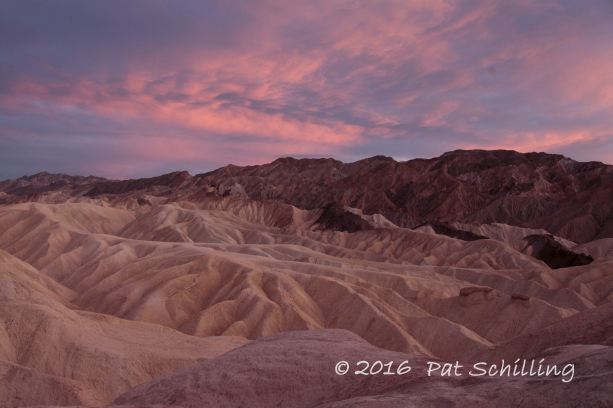
evening
Twilight
|
|
morning moonset
|
|
Zabriski
Sunset
|
|
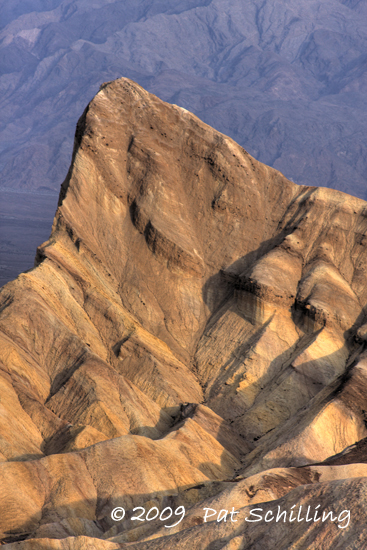
Manly
Beacon
|

Morning
Texture
|
|
|
| MESQUITE FLAT SAND DUNES -
The
sand dunes provide lots of photographic opportunities, both at sunrise
and sunset. That is, if the winds are calm. Moderate winds will obscure
details, but fierce winds can pelt one so hard you feel like you're
being sandblasted, or as my wife described it, mother nature's
exfoliation! Not fun!! |
|
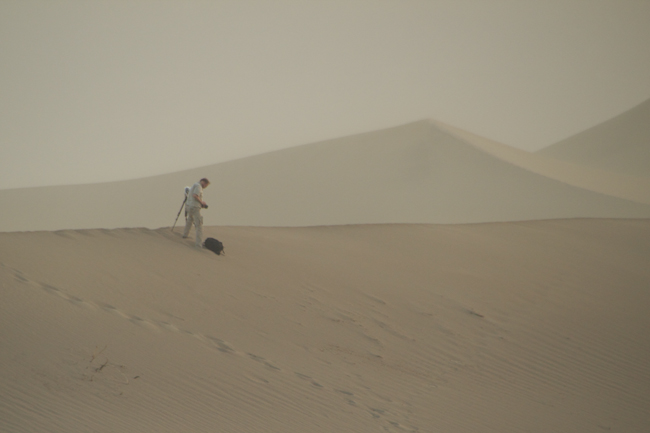
Pat
getting sandblasted |
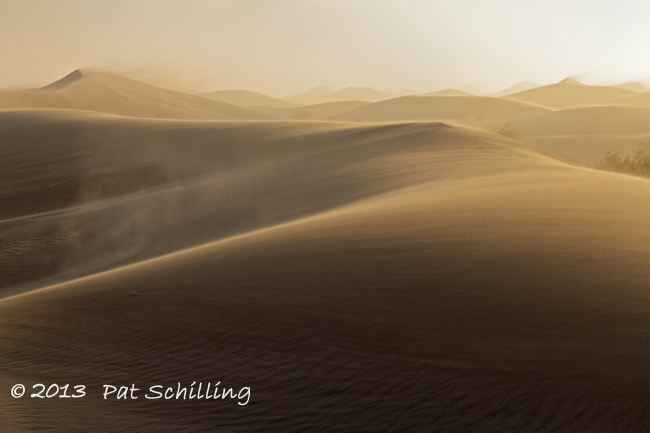
windblown
dunes
|
|
|
On
a calm day, you have two things going for you. For one, as you drive
along the road near the dunes, the relative position of the dunes is
constantly changing, providing seemingly endless compositions. The
other factor is very reminiscent of the views from Steptoe Butte in
south eastern Washington, in that as the sun rises and sets, the
shadows are constantly changing, again providing numerous compositions.
With a telephoto lens, you can capture lots of good images just from
the road. My Canon 100-400mm gave both somewhat wide shots, as well as
close-up details, especially with the cropped sensor on my Canon 7D.
Still, there is a great desire to walk into the dunes, and capture the
texture and detail close up! If you venture in, give yourself a good
20-30 minutes time to make the trek.
|
|
|
| The
one thing you
have little control over is other people! It seems
people will be out in the dunes most of the time, although much fewer
at sunrise. And with that influx, footprints will mar the landscape,
especially if it's been a while since the last significant winds. The
best scenario one can hope for is a calm morning visit, preceded by
strong winds the night before. In other words, you need a lot luck!
|
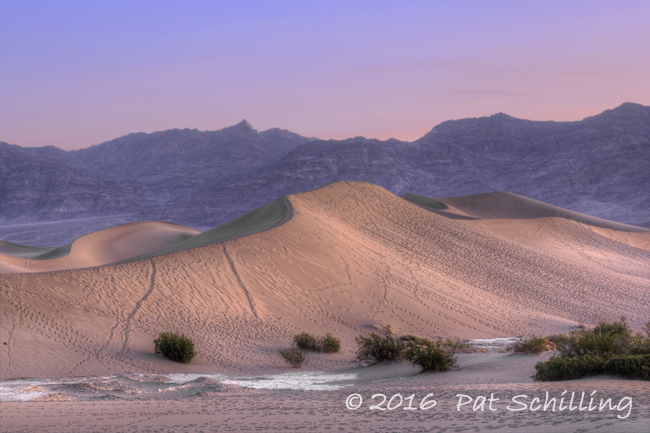
first
light fading
|
|
|
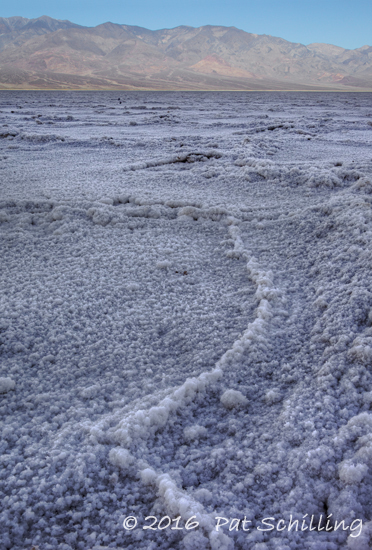
|
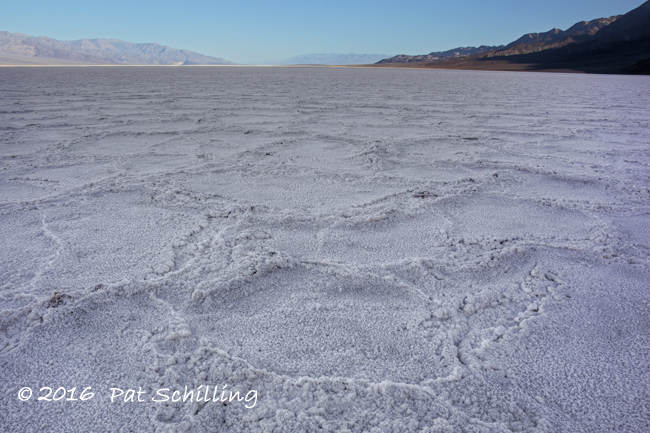
salt
"honeycombs"
|
BADWATER
BASIN - This area is noted for having the lowest point in North
America, at 282 feet below sea level. It's also noted for the
hexagonal, honeycomb shapes on the lake bed, caused by repeated
freeze-thaw and evaporation cycles in the salt covered crust. However,
because this is such a popular area, you'll have to hike out a ways to
find untrampled hexagonal shapes. Also, with a mountain directly east
of
the viewing area, much of the basin is in shadows until perhaps an hour
after sunrise. |
|
|
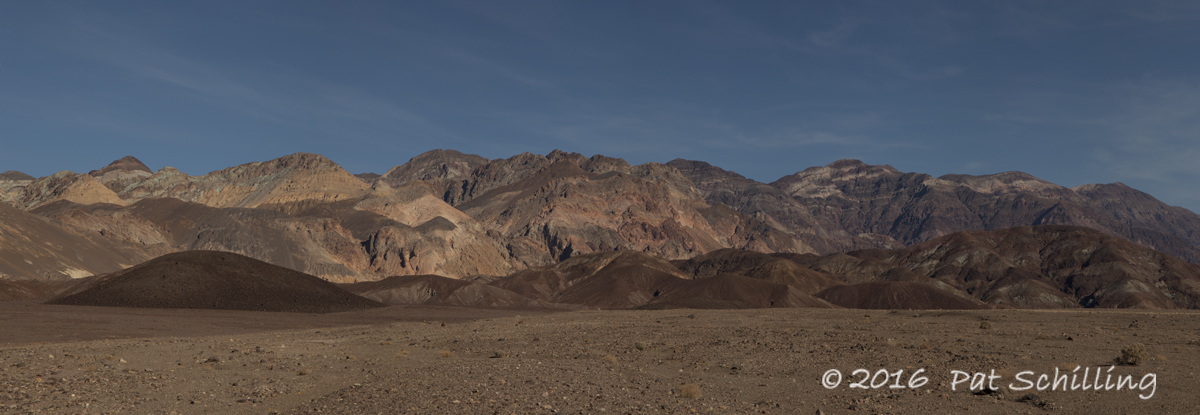
Valley
Panorama
|
|
|
| As
one drives through the valley, the mountain ranges that surround it
provide plenty of picturesque landscapes, seeming to change
around
every corner. But like most areas, the midday light is pretty
flat and boring, and the colors muted. As is normally the case, I use
midday for exploring, finding the best spots to return to in the
"golden hours". Keep in mind that, because of the park layout,
one set of surrounding mountains will be in the shade during
one
golden hour, but sunlit the other. So, you get a different view of the
colorful vistas in the morning than you would in the
afternoon.
Again, that
provides you with more photographic opportunities. |
|
|

|
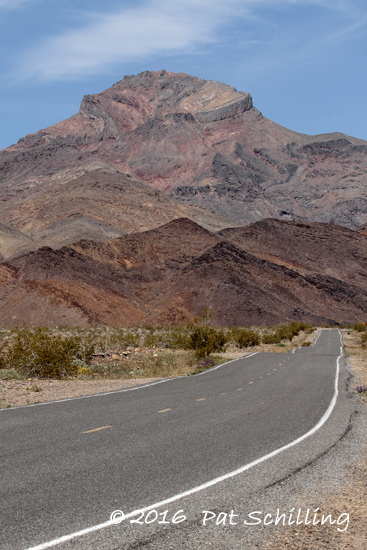
|
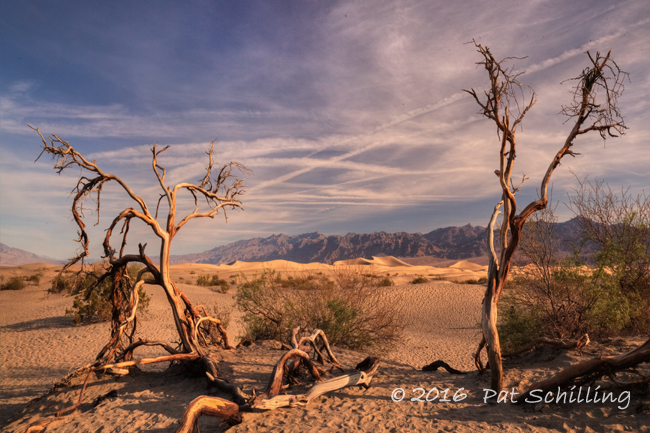
|
|
|
| There's
lots of history in Death Valley, although taking pictures of building
ruins and weathered mining gear is not my thing. But Scotty's Castle
provides one with many photographic subjects. The exteriors and
courtyards are very nice. Unfortunately, my one trip there was midday,
with it's flat light. I'm sure it would very nice late
afternoon.
The interior can only be seen as part of a tour, which costs $15. No
tripods are allowed, but you can use flash. I prefer natural light,
though, so
I bumped the ISO up to 3200 to get acceptable, hand-holding shutter
speeds. If you
don't want tourists in your shots, bring up the rear in the tour! |
|
|

a
bedroom at Scotty's Castle
|

Scotty's
living room
|

looking
down the staircase
|
|
|
| Mileage-
Death Valley is a vast area, and sometimes great distances between
locations. If you stay overnight, Furnace Creek is the only place with
lodging, so I'll use that as a reference point. The closest
photo stop is Zabriski Point, a mere 5 miles away. The Badwater Basin
viewing area is 17 miles south of Furnace Creek. Stovepipe Wells, near
Mesquite Flats Sand Dunes, is 28 miles northwest. Scotty's Castle is
about 55 miles away, also to the northwest. These spots are along paved
roads running through the Valley, with mostly highway speeds posted.
There are numerous unpaved roads taking you to other locations, but
those are pretty slow going, and some fairly primitive. And, there are
hiking trails galore. As you're
planning your stops in Death Valley, keep these distances in mind. It's
easy to get distracted at one stop, and then realize you want to be at
another for sunset, with little time left! And
remember, there are only a couple gas stations in the Park, and expect
to pay $1 - 2 more than outside the Park. |
|
|
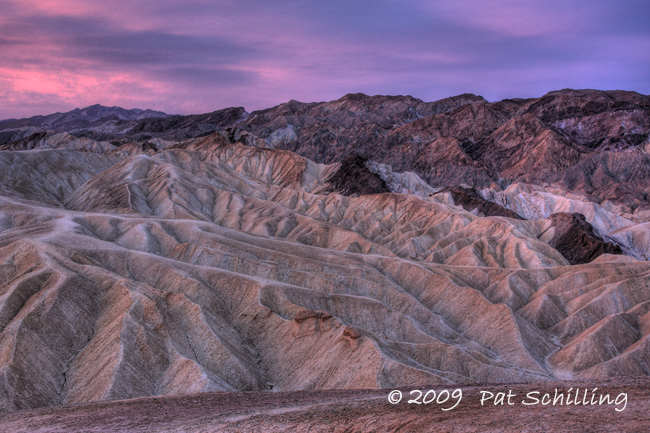
Morning
Twilight at Zabriski Point
|
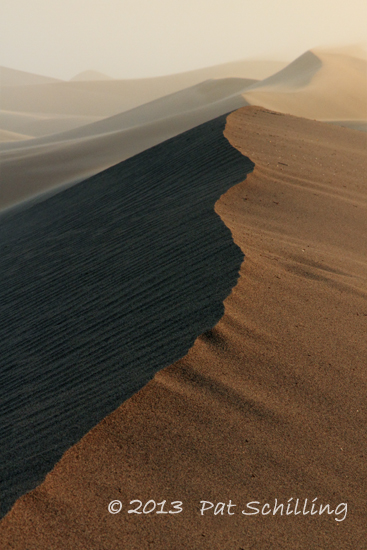
Windblown
Dunes
|
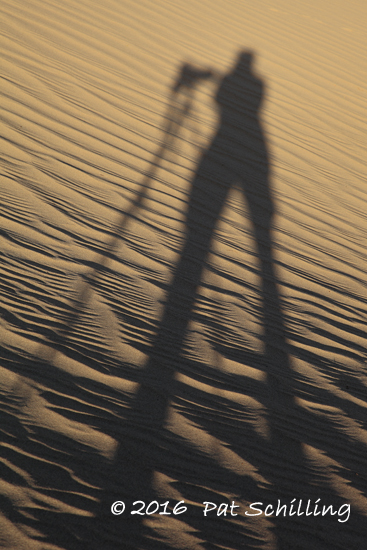
Photographer's
Shadow
|
|
|
| Equipment
- My usual combination is a Canon 5D w/24-105mm lens and Canon 7D
w/100-400mm lens. Because the vistas in Death Valley are so huge, I
didn't
find it necessary to use a super wide lens (17-40mm). I use a tripod
most of the time, along with a cable release. I found a
polarizing filter very helpful in Death Valley, particularly in the
non-golden hour shots. Another helpful "tool" is a plastic bag to cover
my camera and lens to keep the sand out. It was
especially valuable the morning I got sandblasted at the Dunes
a few years ago! And
to help me
figure out where the sun and moon will rise and set, especially in a
place like Death Valley, I always have a compass! I check out a number
of websites ahead of my travels to know when and where those rises and
sets occur. And I ALWAYS check weather forecasts to know what to expect. |
|
|
|
|
|
|
|
|
|
|
|
|
|
|
|
|
|
|
|
e-mail:
pat@patschilling.com
Unless
otherwise noted, Pat Schilling owns exclusive copyright to all
photographic images on patschilling.com. ANY use is prohibited, unless
explicitly granted by Pat Schilling.
|
|
|